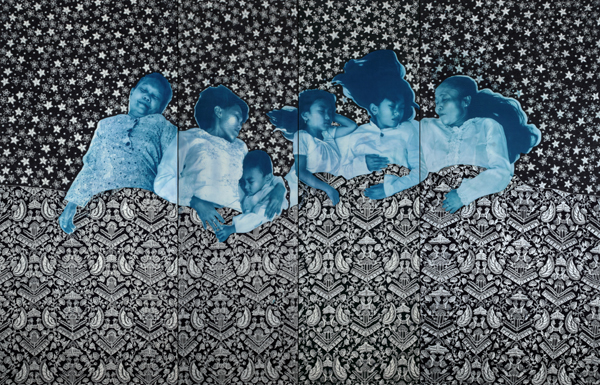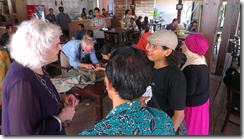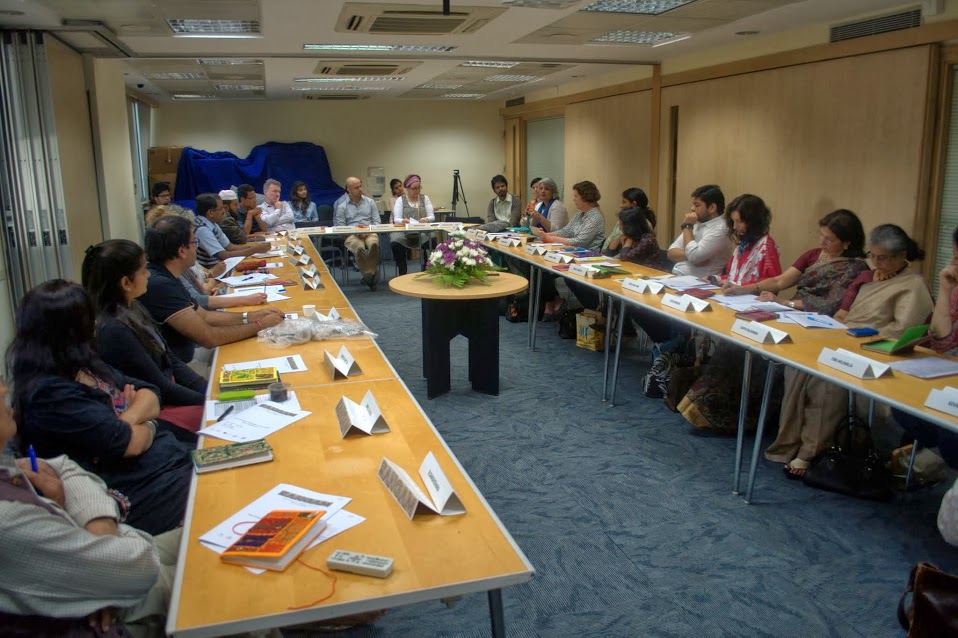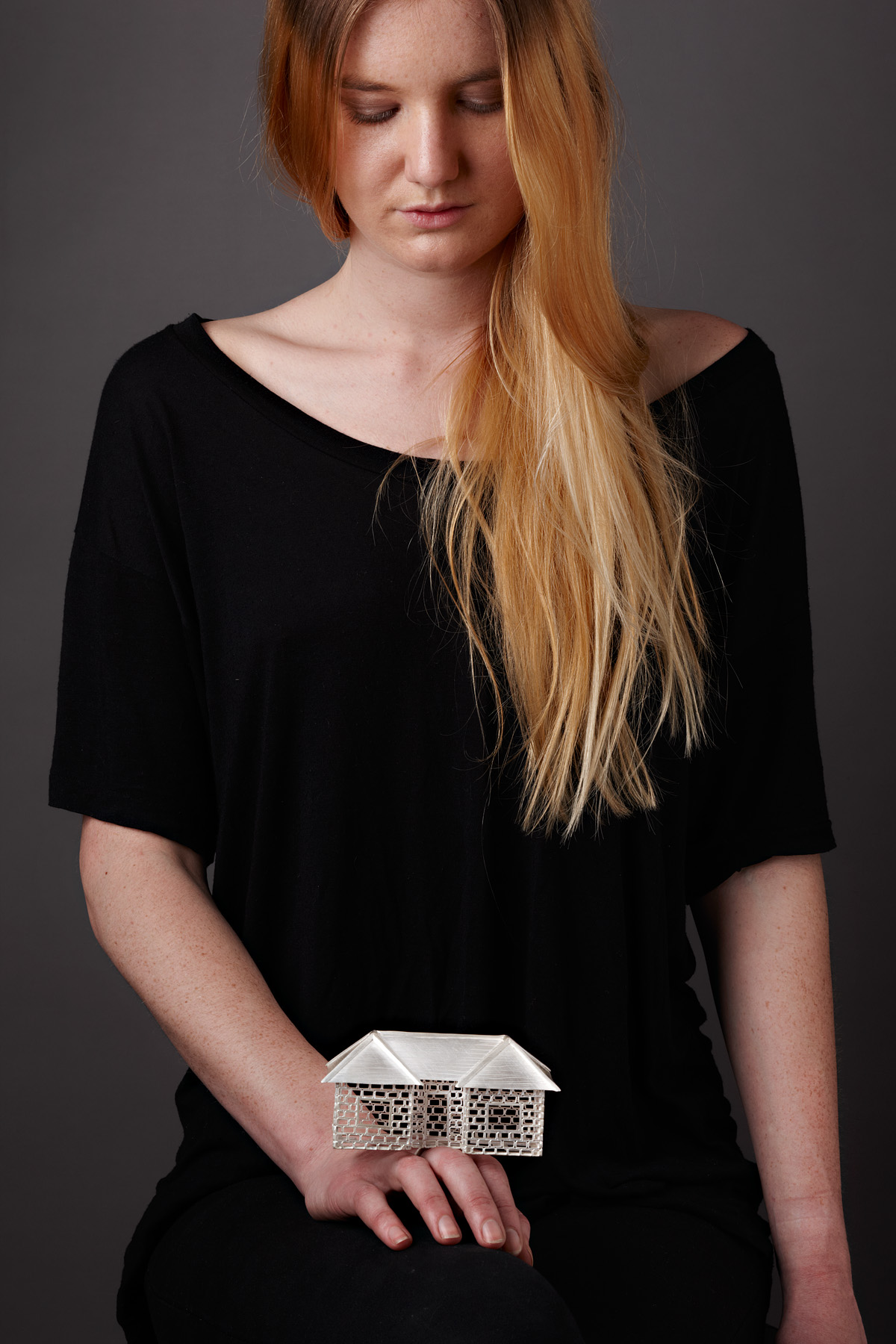Mala di Jari Kita is an innovative project combining batik with photography by artists Mintio Samantha Tio (Singapore) and Kabul Budi Agung Kuswara (Indonesia) in collaboration by the batik-makers of Kebon Indah, in Indonesia.
Author: House
Batik design partnerships in Indonesia
As a craft, batik seems quintessentially Indonesian. After a dispute with Malaysia about its origin, UNESCO in 2009 officially recognised batik as part of Indonesia’s Intangible Cultural Heritage. To celebrate, President Yudhoyono declared 2 October to be batik day, and called on all Indonesians to wear their national costume with pride every Friday. This proved … Continue reading Batik design partnerships in Indonesia
Dialog Batik, Central Java 2014
A one day conference will provide information necessary for participants to plan for export of their batik and craft products. This will include information about product design, e-commerce platforms and legal issues. For visitors to Central Java, it will be an opportunity to learn about the contemporary batik scene.
Dialog Batik in Indonesia for Semarang Night Carnival
Dialog Batik aims to promote create partnerships between Australia and Indonesia. It involves a workshop in Semarang, Central Java, 22-23 May 2014, where participants show their work and discuss standards for partnership. The workshop will coincide with the glamorous Semarang Night Carnival (see report on last year’s event here). If you are interested in participating, … Continue reading Dialog Batik in Indonesia for Semarang Night Carnival
Journey Leads to New Platform
Samaanata was the culmination of a three year journey between Australia and India. Sangam: Australia India Design Platform involved an extended series of roundtables, workshops, forums and surveys examining the interests and relationships of producers, developers and consumers. The goal has been to encourage a growth in design exchange between Australia and India by identifying … Continue reading Journey Leads to New Platform
Survey: We want to know who we are
We conducted a quick survey of the Sangam Project network in the lead up to the Bangalore event. The responses we received were evenly distributed between Australia and India, designers and artisans. On the question of what information should be available to consumers, a large majority 80% said names of both artisans and designers should … Continue reading Survey: We want to know who we are
Where Moth & Rust Decay in Bangalore
by Katheryn Leopoldseder You are warmly invited to Where Moth & Rust Decay A jewellery exhibition by Katheryn Leopoldseder Opening Thursday the 5th of December 6–8pm 1 Shanthi Road Studio Gallery Opening Times: 5th–11th December 2013 Open daily 11am–7pm Catalogue available to view online from katherynleopoldseder.com.au Where Moth and Rust Decay responds to Katheryn’s travels … Continue reading Where Moth & Rust Decay in Bangalore
‘Indian Art – Its Neglect’ ;by Mahatma Gandhi
Gandhi’s words from nearly 100 years ago. What has changed? Unlimited production, the competition for increase in quantity and the unceasing search for markets form even now the most prominent and characteristic features of national programmes. They are, no doubt, framed by those who have been unable to rid themselves of the mesmerism due to … Continue reading ‘Indian Art – Its Neglect’ ;by Mahatma Gandhi
Mariamman in the age of climate change
The cultural dialogue between Australia and India continues to grow. Below is notice of a group called Jambudvipa, which seeks to invigorate young Australians involved in the Indian arts to work together and combine creative forces to propagate it, and at the same time work within the different cultural spaces. They are open to future … Continue reading Mariamman in the age of climate change
Artist Statement: Archana Kumari
Archana Kumari is a folk artist from Bihar. At a young age her talent was recognised by visitors from the Asia Society and she received the extraordinary opportunity to travel to New York. Now having learnt English and acquired confidence she works as an independent artist in Delhi, commissioning extra work from women in her … Continue reading Artist Statement: Archana Kumari
An ethical architecture for creative exchange
The question for Sangam 3: How can the user be creatively engaged to sustain ethical partnerships? Creative products involve a supply chain that connects a wide variety of functions, including production, design, retail and consumption. Each link has a potentially creative contribution to make. The designer/artist develops a concept and gathers capital necessary for its … Continue reading An ethical architecture for creative exchange
Submission to the Australia in the Asian Century paper
Increased engagement in the Asia Pacific region is largely dependent on growing trust between cultures. It is important that both parties have confidence that each others aims complement their own long term interests. One obstacle to this trust is a crude development paradigm which presumes that the only course for progress in Asia is to … Continue reading Submission to the Australia in the Asian Century paper










